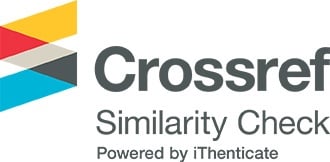Nghiên cứu mô hình điều khiển robot ba bậc tự do bằng hồi tiếp tuyến tính hóa
Các tác giả
Từ khóa:
động lực học robot, Denavit-Hartenberg (DH), điều khiển hệ phi tuyến, mô hình hóa hệ thống, hồi tiếp tuyến tính hóaTóm tắt
Nghiên cứu này nhằm mục tiêu áp dụng bộ điều khiển hồi tiếp tuyến tính hóa để điều khiển robot ba bậc tự do. Động lực học robot ba bậc tự do là hệ thống MIMO (multi-input multi-output) có tính phi tuyến phức tạp, yêu cầu cần có một bộ điều khiển tiên tiến để điều khiển robot bám theo quỹ đạo đặt trước. Bài toán động học thuận và động học nghịch cũng được trình bày dựa trên phương pháp Denavit-Hartenberg để chuyển đổi quỹ đạo đặt ra từ không gian Descartes sang không gian khớp và ngược lại. Kết quả mô phỏng cho thấy tính bền vững của hệ thống khi có tác động nhiễu và đáp ứng vị trí các khớp của robot có thời gian xác lập là 0.25(s), không dao động và sai số xác lập bị triệt tiêu.
Abstract
This study presents the application of feedback linearization for 3-dof manipulator systems. Robot manipulator is a multi-input multi-output system with high complex nonlinear dynamics, requiring an advanced controller in order to track a specific trajectory. Forward and inverse kinematics are presented based on Denavit Hartenberg notation to convert the end effector planned path from cartesian space to joint space and vice versa. The simulation results show that proposed control is stable and robust in several conditions of noise affection and the position response of each joint has a settling time about 0.25(s), without fluctuation and steady-state error.
Tài liệu tham khảo
[1] H.M. Vũ, T.T. Hùng và N.C. Ngôn, “Điều khiển robot SCARA sử dụng giải thuật mờ-nơron,” Tạp chí Khoa học Giáo Dục Kỹ thuật, số 54 (09/2019): 80-86, 2019.
[2] F. Valero, V. Mata and A. Besa, “Trajectory Planning In Workspaces With Obstacles Taking Into Account The Dynamic Robot Behaviour,” Mechanism And Machine Theory, vol. 41, pp. 525-536, 2006.
[3] N.H. Dũng, “Điều khiển trượt thích nghi dùng mô hình nơron mờ,” Tạp chí Khoa học Đại học Cần Thơ, 15a: 273-282, 2010.
[4] A.F. Amer, E.A. Sallam and W.M. Elawady, “Adaptive fuzzy sliding mode control using supervisory fuzzy control for 3 DOF planar robot manipulators,” Applied Soft Computing 11, 4943-4953, 2011.
[5] F.L. Lewis, Robot manipulator control theory and practice, Place of publication: Springer, 2004.
[6] J. Kim,…, M. Al-Shabi, “Dynamic Modeling and Motion Control of a Three-Link Robotic Manipulator,” The 2017 International Conference on Artificial Life and Robotics, Japan, 2017. Place of Publication: Seagaia Convention Center, 2017, 19-22.
[7] S.G. Ahmad, M.A. El-Gohary, M.S. Elksas and F.G. Areed, “Three Link Rigid Manipulator Control Using Improved Neural Network Based PID Controller.” International Journal of Neural Networks and Advanced Applications, vol. 06, pp. 60-68, 2019.
[8] A. Gokhan and G. Canserver, “Adaptive neural network based fuzzy sliding mode control of robot manipulator”. IEEE Conference on Cybernetics and Intelligent Systems, Bangkok, 2006. Place of Publication: Bangkok, 2006, 1-6.
[9] N. H. Dũng, “Điều khiển trượt hệ phi tuyến dùng mạng nơron hàm cơ sở xuyên tâm,” Tạp chí Khoa học Đại học Cần Thơ, 15a: 263-272, 2010.
[10] R. Bonna and J. F. Camino, “Trajectory Tracking Control of a Quadrotor Using Feedback Linearization,” Proceedings of the XVII International Symposium on Dynamic Problems of Mechanics, 22-27, 2015.
Tải xuống
Tải xuống: 58







